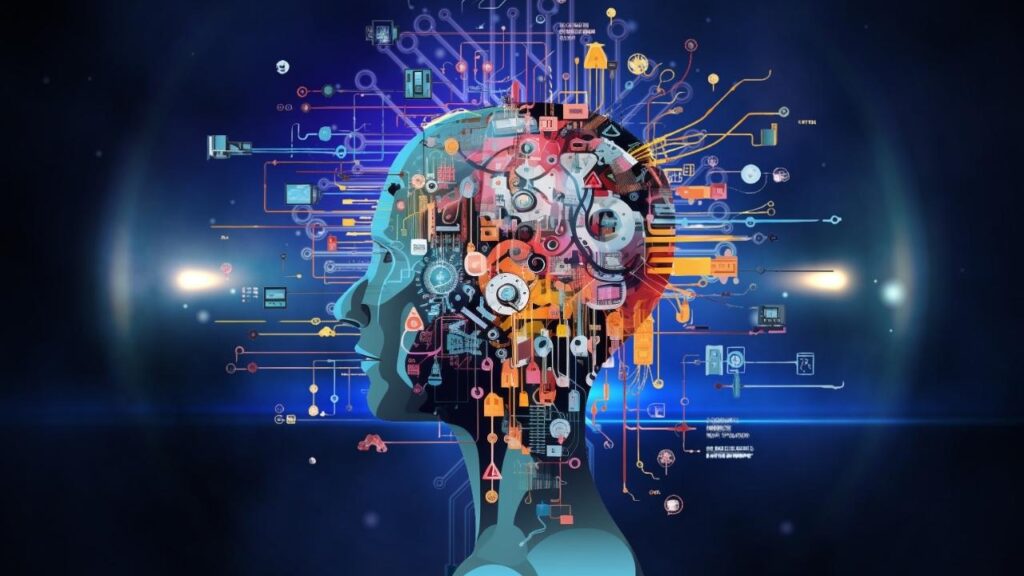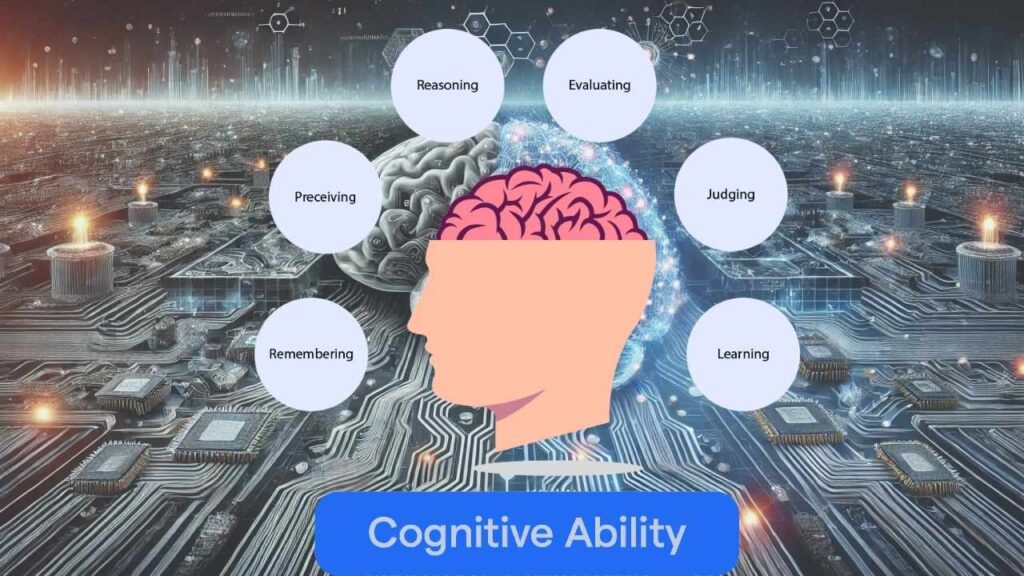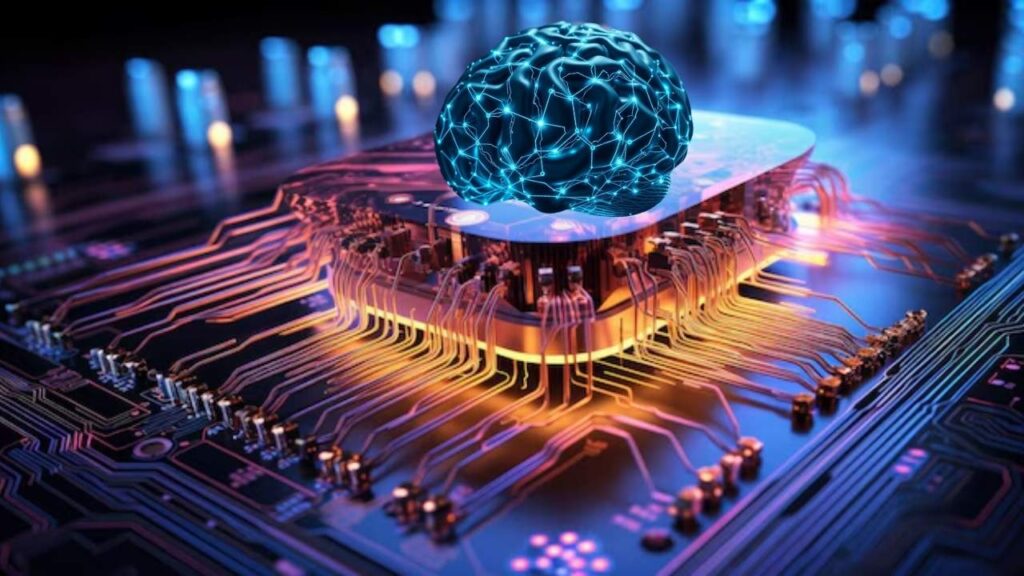New AI Architecture Emulates Higher Human Mental Functions: Artificial Intelligence (AI) is entering a new era. The latest breakthroughs in AI architecture now emulate higher human mental functions, pushing the boundaries of what machines can do. These innovations are not just technical marvels—they promise to change how we live, work, and interact with technology.

In this comprehensive guide, we’ll explore what these new AI systems are, how they work, and what they mean for professionals, businesses, and everyday users. Whether you’re a curious student or an industry expert, this article will give you the insights you need to understand—and prepare for—the next evolution in machine intelligence.
Table of Contents
New AI Architecture Emulates Higher Human Mental Functions
| Feature/Insight | Details & Data | Career/Professional Impact |
|---|---|---|
| Human-Like Memory in AI | New architectures bring long-term, flexible memory to AI, enabling more human-like reasoning. | Enhances AI’s role in decision-making, research, and analytics |
| Imagination & Higher Mental States | Transformer models simulate imagination and higher cognitive processes. | Powers creative tools, advanced simulations, and problem-solving |
| Brain-Inspired Hardware | Synaptic transistors integrate memory and processing, boosting efficiency and associative learning. | Reduces AI energy costs, enables smarter, context-aware systems |
| Value-Driven Cognition | AGI agents use internal motivations, not just data patterns, to act autonomously. | Supports autonomous robotics, adaptive systems, and AGI research |
| Multistep Reasoning & Real-World Adaptation | AI now breaks down complex tasks, integrates knowledge, and adapts to real-world scenarios. | Useful in healthcare, finance, robotics, and logistics |
The rise of AI architectures that emulate higher human mental functions is a turning point in technology. By integrating imagination, memory, reasoning, and motivation, these systems are making AI more powerful, adaptable, and useful than ever. While there are still big differences between AI and the human brain, the gap is narrowing thanks to breakthroughs in architecture and hardware. For professionals, businesses, and everyday users, staying informed and adaptable will be key to thriving in this new era of machine intelligence.
Understanding the New Wave: What Does “Emulating Higher Human Mental Functions” Mean?
For decades, AI has excelled at tasks like recognizing images, translating languages, and playing games. But these were narrow skills, often based on finding patterns in huge datasets. The new generation of AI is different. It aims to emulate higher human mental functions—the abilities that make people unique, such as:
- Imagination: The power to picture things that don’t exist yet, run mental simulations, and invent new ideas.
- Memory: Not just storing facts, but remembering experiences, learning from them, and applying that knowledge in new situations.
- Reasoning: Breaking down complex problems, making logical connections, and evaluating different options.
- Motivation: Acting not just on commands or data, but based on internal goals, values, and even curiosity.
These advances are the result of both new AI architectures—the “blueprints” for how AI systems are built—and innovative hardware that mimics the way our brains work.
How Do These Advanced AI Architectures Work?
1. Human-Like Memory

Traditional AI systems have limited memory. They process information quickly, but forget it just as fast. New architectures change the game by giving AI a more flexible, long-term memory, similar to how humans remember and learn over time. This allows AI to:
- Recall past interactions, decisions, and outcomes.
- Use previous experiences to make better choices in the future.
- Learn from mistakes and adapt to new challenges.
Example:
A customer service AI powered by human-like memory could remember your preferences, previous issues, and solutions, offering more personalized and effective support each time you interact.
2. Imagination and Higher-Level Cognition

Recent transformer architectures are designed to simulate imagination and higher-level cognitive processes. This means AI can:
- Generate creative ideas and solutions.
- Run “what if” simulations to test different scenarios.
- Assist in complex design, storytelling, and strategy tasks.
Example:
In urban planning, such an AI could imagine multiple city layouts, simulate traffic patterns, and suggest the best design for both efficiency and quality of life.
3. Brain-Inspired Hardware

The human brain is incredibly efficient because it combines memory and processing in the same place. New synaptic transistors mimic this by integrating memory and computation on a single chip. The benefits include:
- Lower energy consumption (the brain runs on about 20 watts—less than a light bulb!).
- Faster learning and pattern recognition.
- The ability to form associations and learn context, not just memorize facts.
Example:
A wearable health monitor using this hardware could learn your daily habits, recognize early signs of illness, and alert you or your doctor in real time.
4. Value-Driven, Human-Like Cognition

Some researchers are developing Artificial General Intelligence (AGI) agents that go beyond copying data—they have internal motivations and can set their own goals. Their approach measures:
- Cognitive architecture (how the AI thinks and makes decisions).
- Understanding of the environment (how it perceives and interacts with the world).
- Value functions (what drives its choices and actions).
This makes AI more like a crow (which solves problems to get food) than a parrot (which just repeats words).
Example:
An autonomous robot using this framework could decide to explore a new area, learn from its environment, and adapt its behavior to achieve its goals safely and efficiently.
5. Multistep Reasoning and Real-World Adaptation
Modern AI can now break down complex tasks into smaller steps, integrate knowledge from different sources, and adapt to new information. This is called multistep reasoning. It’s especially useful in fields like:
- Healthcare: AI can analyze a patient’s history, current symptoms, and test results to suggest multiple treatment options.
- Finance: AI can evaluate market trends, risks, and opportunities to help investors make smarter decisions.
- Robotics: Robots can learn new skills, adapt to changing environments, and work safely alongside humans.
Example:
A logistics AI could plan delivery routes, adjust for traffic or weather, and communicate with drivers to solve problems on the go.
The Science Behind the Scenes: How Close Are We to the Human Brain?
While these advances are impressive, it’s important to note that AI is still very different from the human brain. Artificial neural networks are much simpler and less dynamic than biological ones. However, by infusing biological principles—like diverse neuron behaviors and network effects—researchers are making AI more flexible and efficient.
- Neuromorphic computing is a field focused on building computers that work more like brains, using less energy and learning more continuously.
- In some cases, AI and human brains process information in similar ways, especially when it comes to language and pattern recognition.
- However, both AI and brains are “black boxes”—it’s hard to see exactly how they work on the inside, and they’re still fundamentally different in many ways.
Practical Impact: What Does This Mean for You?
For Professionals and Businesses
- Healthcare: AI with human-like memory and reasoning can help doctors diagnose diseases, suggest treatments, and track patient outcomes over time.
- Education: Adaptive learning systems can remember each student’s progress and tailor lessons for better results.
- Finance: Smarter AI can analyze market data, predict trends, and help manage risk.
- Robotics and Automation: Robots with value-driven cognition can work safely with people, learn new tasks, and adapt to changing environments.
For Everyday Users
- Personal Assistants: AI can remember your preferences, schedule, and habits, making life easier and more efficient.
- Entertainment: Hyperrealistic games, AI-generated movies, and digital humans will create new experiences.
- Smart Devices: Wearables and home assistants will become more intuitive, learning from your behavior to provide better service.
AI systems with human-like memory and reasoning are expected to boost productivity in knowledge-based industries by up to 40% over the next five years.
Practical Guide: How to Prepare for the AI Revolution
- Stay Informed: Follow trusted sources and keep up with the latest developments in AI technology.
- Learn the Basics: Even a simple understanding of how AI works will help you use it more effectively.
- Experiment with AI Tools: Many AI-powered apps are user-friendly and can help you in your studies, work, or daily life.
- Focus on Human Skills: Creativity, empathy, and critical thinking are more valuable than ever—these are areas where humans and AI work best together.
- Think Ethically: As AI becomes more powerful, consider privacy, fairness, and transparency in how it’s used.
New Materials Support Progress Toward More Reliable Quantum Computers
Software Detects Glass Walls With 96% Accuracy Without Using Costly Sensors
Custom Polymers Offer Efficient Electrochemical Separations for Greener Drug Production
FAQs About New AI Architecture Emulates Higher Human Mental Functions
Q1: Can AI really “think” like a human?
AI is getting better at mimicking some human mental functions, like memory and reasoning, but it doesn’t have feelings or consciousness. It’s more like a very smart tool than a person.
Q2: Will AI take over jobs?
AI will change many jobs, but it will also create new opportunities. People who learn to work with AI will have an advantage in the future workforce.
Q3: How safe are these new AI systems?
Researchers are working hard to make AI safe, ethical, and transparent. It’s important for companies and governments to set clear guidelines and monitor how AI is used.
Q4: Where can I learn more about these technologies?
Look for reputable technology news, academic journals, and industry reports for in-depth articles and updates.
Q5: What is “brain-inspired hardware”?
This is a new type of computer chip that works more like the human brain, combining memory and processing to make AI faster and more efficient.



















